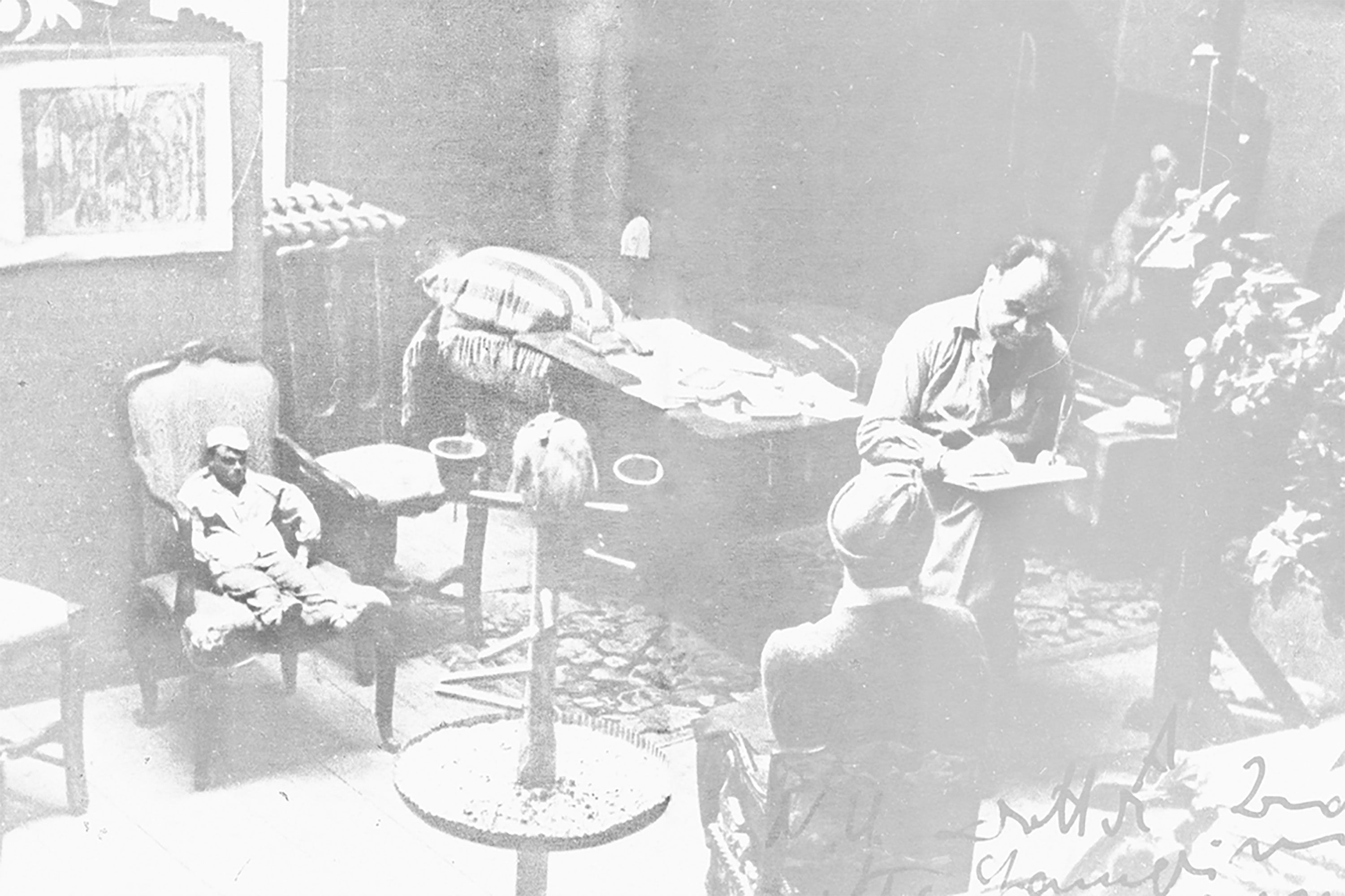
MUSEUM EXHIBITION
Luca VItone
D'après (De Pisis - Paolini)
Museo Novecento, Firenze, Italy
Mar. 18 - Sep. 07, 2022
De Pisis and Paolini are two important references for Luca Vitone (Genoa, 1964), who enters the construction of the exhibition project by continuing this mise en abyme with a series of site-specific works within the exhibition D'après (De Pisis – Paolini). While a painting by De Pisis allows Vitone to develop an olfactory sculpture whose perfume pervades a room of the museum, a work created in collaboration with Maria Candida Gentile and inspired by the canvas Il gladiolo fulminato, stored in Ferrara and deliberately not present in the exhibition, in the other case Vitone has recovered from the dust studio of Giulio Paolini, which became pictorial material to create a watercolor that through this expedient wants to stage the artist's atelier. Vitone's operation is completed with a double installation within the exhibition space that hosts the one dedicated to De Pisis. In one of the first rooms, the visitor will discover a herbarium that alludes to the botanical interests of De Pisis, who also liked to call himself a naturalist, entomologist, and miniaturist. In the same space, the viewer can come across a puppet, whose features portray Vitone. The same translation or transfer mechanism is testified by a rag puppet that appears in a photo of De Pisis in his studio, an archival document used by Vitone to create a wallpaper that will fascinate the exhibition rooms on the first floor of the museum in its entirety. The works of De Pisis present in the exhibition will be displayed on this wallpaper, in an alienating setting that feeds the evocative and conceptual game of the entire exhibition project.
De Pisis et Paolini sont deux références importantes pour Luca Vitone (Gênes, 1964), qui entre dans la construction du projet d'exposition en poursuivant cette mise en abyme avec une série d'œuvres in situ au sein de l'exposition D'après (De Pisis - Paolini). Tandis qu'une peinture de De Pisis permet à Vitone de développer une sculpture olfactive dont le parfum envahit une salle du musée, une œuvre réalisée en collaboration avec Maria Candida Gentile et inspirée de la toile Il gladiolo fulminato, conservée à Ferrare et volontairement absente de l'exposition, dans l'autre cas Vitone a récupéré de la poussière de l'atelier de Giulio Paolini, devenue matière picturale pour créer une aquarelle qui par cet expédient veut mettre en scène l'atelier de l'artiste. L'opération de Vitone est complétée par une double installation à l'intérieur de l'espace d'exposition qui accueille celui dédié à De Pisis. Dans l'une des premières salles, le visiteur découvre un herbier qui fait allusion aux intérêts botaniques de De Pisis, qui aimait aussi se définir comme naturaliste, entomologiste et miniaturiste. Dans le même espace, le spectateur peut rencontrer une marionnette, dont les traits représentent Vitone. Le même mécanisme de traduction ou de transfert est attesté par une marionnette en chiffon qui apparaît sur une photo de De Pisis dans son atelier, un document d'archive utilisé par Vitone pour créer un papier peint qui fascinera les salles d'exposition du premier étage du musée dans leur intégralité. Les œuvres de De Pisis présentes dans l'exposition seront exposées sur ce papier peint, dans un décor aliénant qui alimente le jeu évocateur et conceptuel de l'ensemble du projet d'exposition.

